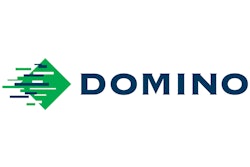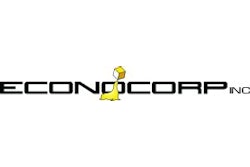Like other craft brewers in the U.S., Victory Brewing of Downingtown, PA, heard the call for cans a few years back and responded by installing a brand new canning line in its Parkesburg, PA, plant.
“We’ve been talking about it off and on for about the past three years, watching to see what it was that consumers want,” says Scott Dietrich, VP Brewing Operations at Victory. “Portable and non-breakable is what they wanted, and it was pretty clear that an aluminum can was the format they were gravitating toward. So then we went back and forth a bit on the question of how fast a line we should be looking for. We decided in the end for a line that does 150 cans/min. It gives us an opportunity to get into this part of the market and see, realistically, how much beer we’re going to sell in cans. We’ve been running it now since April.”
So far only 12-oz cans, supplied by Ball, are in production. Depalletizing, rinsing, and filling/seaming equipment all comes from Italy’s Comac. It was also Comac that led to the brewery’s secondary packaging equipment supplier, Econocorp.
“Comac is represented by Eurosource out of Dallas,” says Dietrich. “We got very good feedback from a number of their customers. And what Eurosource was showing us was so much more cost-effective than some of the other options we looked at. We wanted to be pragmatic about this new container category, and didn’t need nor could we afford a high-speed line. The equipment Eurosource was showing us nicely filled the niche just below the really high-speed options. Comac builds high-quality machines with a great reputation for minimizing oxygen pickup. And they’ve really stood behind their product.”
Dietrich adds that the same could be said about Econocorp. “Their niche is in that range of 30 to 40 cartons a minute,” says Dietrich. “We have two of their machines on the line.”
One is the Spartan Cartoner, which erects paperboard cartons and inserts either four, six, 12, or 24 cans and then uses Econocorp’s system of glue daubers to glue the cartons shut. Also from Econocorp is a Spartan Wraparound Traypacker that pushes either two 12-packs or four six-packs or six four-packs onto a corrugated tray and then folds the tray around the cartons. It uses a Nordson (www.nordson.com) hot-melt adhesive system to seal the corrugated tray around the cartons.
When the Spartan Cartoner is putting 24 cans in a carton, the carton simply bypasses the Wraparound Traypacker.
Depal is first
At the head of the line is an overhead depalletizer that Dietrich describes as “a really interesting piece of equipment built just right for this kind of line. When you think of automated depalletizing, it’s usually expensive, complex, and very robust. This one is quite different. It does everything we need, yet simply and cost effectively. The operator places a pallet of cans on the infeed conveyor and then manually removes the top frame before pushing the pallet into the machine. From there it’s all automated, including removal of slip sheets between layers and discharge of pallets once they’re empty. For our purposes it’s just the right balance of capital investment and labor-reducing automation. Every 25 minutes or so an operator puts in a new pallet and then walks away. It really works well.”
Line pressure and a motorized discharge conveyor single file the cans, which then move down a lowerator toward the rinser.
“One optional component we added for Victory is the ionized air rinsing unit,” says Frederic Petit of Eurosource. Supplied by LWT, it produces an electrical charge that, when mixed with sterile air, is very effective at cleaning the insides of the cans.
A short distance from the rinser is the rotary filler/seamer block. The 16-valve short-tube counterpressure filler purges the cans first with CO2 to reduce oxygen pickup. Then the four-head seamer applies the can ends.
A can warmer comes next. “It cuts down on the condensation that forms on the outside of the can,” says Dietrich. “You don’t want that moisture forming when you’re putting cans into cartons as we are.”
Downstream from the warmer, cans are inverted so that a Domino ink-jet coder can put a date code on the can bottoms. Cans are then uprighted in a twist rail and move into the Econocorp Spartan Cartoner. It erects either four-, six-, 12-, or 24-count paperboard cartons, collates cans, pushes cans into the carton, and then glues the carton shut.
Appealing graphics
“The Econocorp option for secondary packaging is appealing to a lot of craft breweries these days as they look for ways to bring more high-impact graphics into their can packaging,” says Eurosource’s Petit. “If you think about Victory’s six-pack presentation in a carton compared to six cans in a ring carrier, it’s pretty clear which format has the better shelf impact. And it’s all automated, including the insertion of cartons into corrugated trays. Bringing the Comac and Econocorp systems into an integrated whole worked nicely for Victory Brewing.”
An ink-jet printer, again from Domino, applies date code information to the carton, which is an 18-pt SBS printed offset in four colors by NEPA Carton and Carrier Co. At this point the cartons are ready for the Econocorp Wraparound Traypacker. It pushes two 12-count or four six-count or six four-count cartons onto a flat blank of corrugated. Then it forms the tray around the cartons. Trays receive a bar code from an Elmark ink-jet coder.
Should Victory Brewing choose to add 16-oz cans to its mix, Petit says that changeover will be a relatively simple operation. One helpful bit of machine design is the rinser’s dual-lane infeed. “A pneumatic gate directs cans into the necessary gate if you go from 12 to 16 oz,” says Petit. “Otherwise there would be a number of time-consuming steps involved in changing the infeed guides.
With four months of production under their belts, Dietrich and colleagues are more than pleased with how the new can line has performed. “Both Econocorp and Comac did a great job of giving us reliable, dependable output and top quality,” says Dietrich. “Not to mention a small footprint. We shoehorned this line into space that’s allocated for tanks in the future. The bottom line is that we now have an opportunity to get into a new market.”
Laser coding on bottles
Elsewhere at Victory Brewing’s state-of-the-art Parkesburg facility is a bottling line where a D320i scribing laser from Domino was added recently. It’s capable of producing unlimited lines of text in any orientation, and in many fonts and sizes. Additionally, the laser can be managed by Domino’s intuitive remote TouchPanel. This means the printer can be located on the production line, while the control panel is located wherever it’s convenient for the operator. Finally, the D320i applies clearly legible codes to a wide array of materials, at low to high production speeds, with unmatched dependability. According to Director of Engineering Steven Galliera, “One of the key reasons we chose Domino is the reliability and repeatability of their laser. And the reason that’s so important is during changeovers, we don’t want to lose any production time, because we know we have customers that are waiting for our product.” Galleria notes that in addition to 12- and 22-oz bottles, Victory also fills a 750-mL bottle.
QUICK FACT: The market for beverage packaging equipment in the U.S. was estimated to be $1.28 billion in 2012. Source: PMMI Beverage Industry Assessment 2014. For a free executive summary, visit www.pmmi.org/research.




































